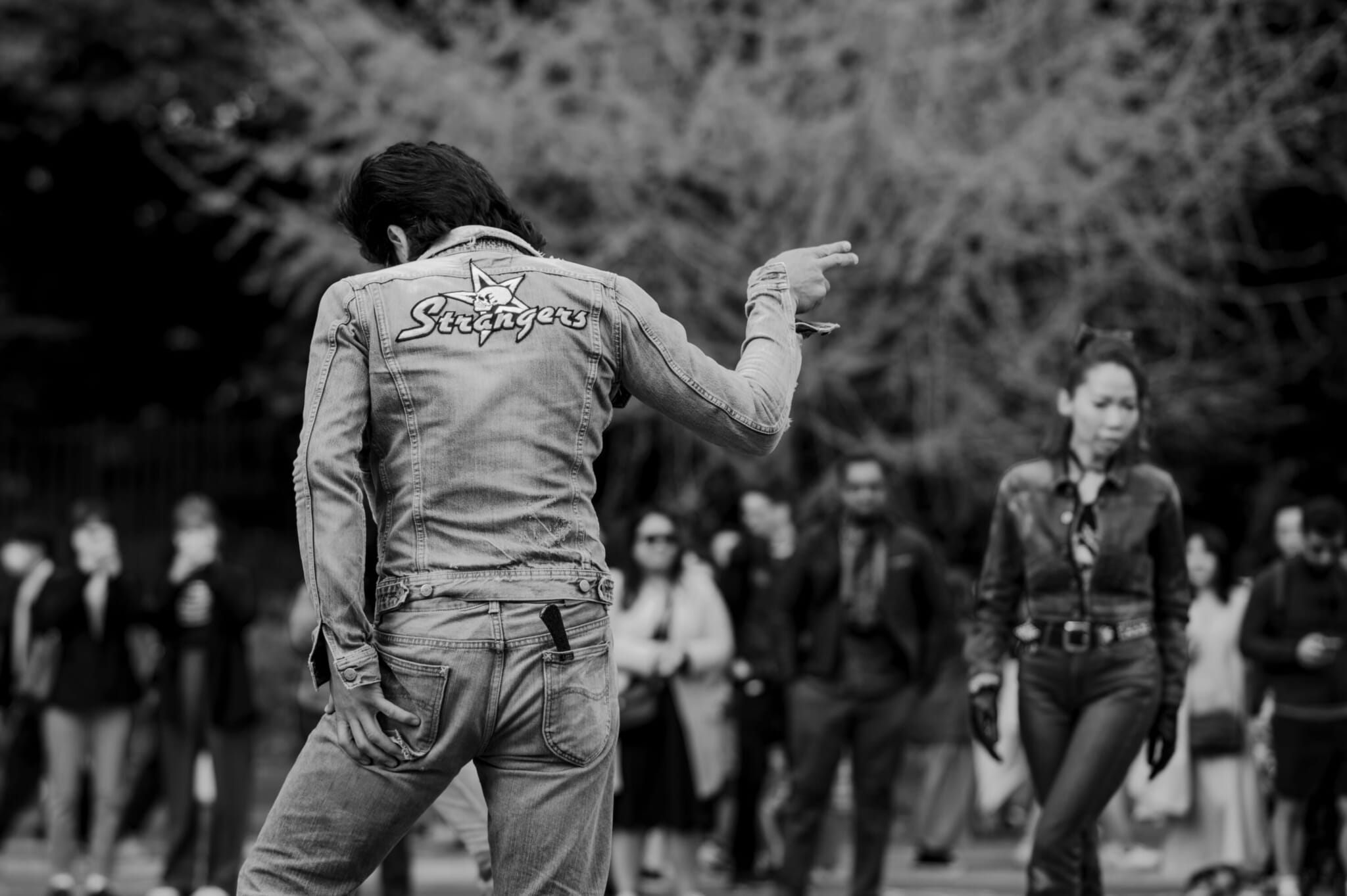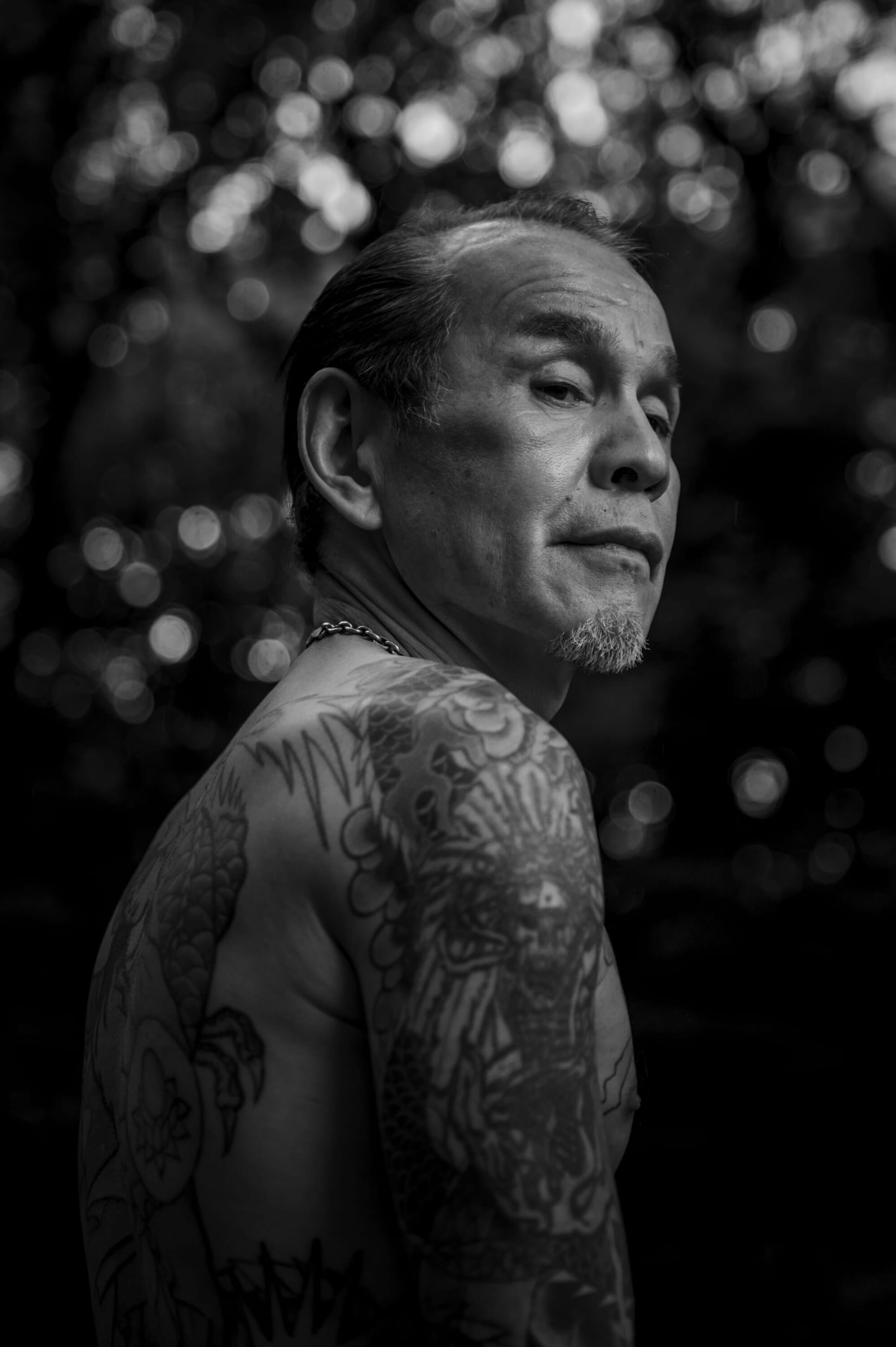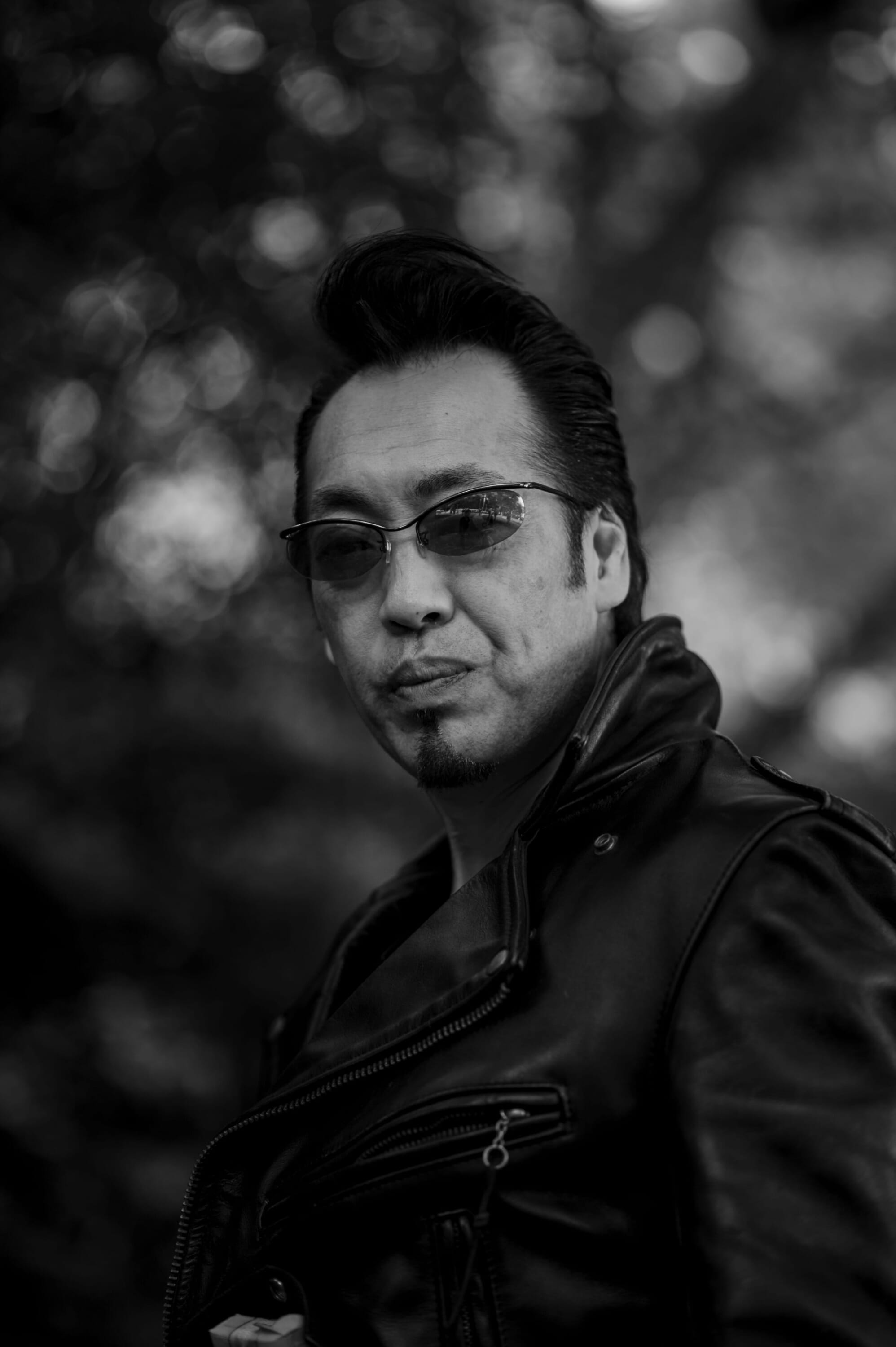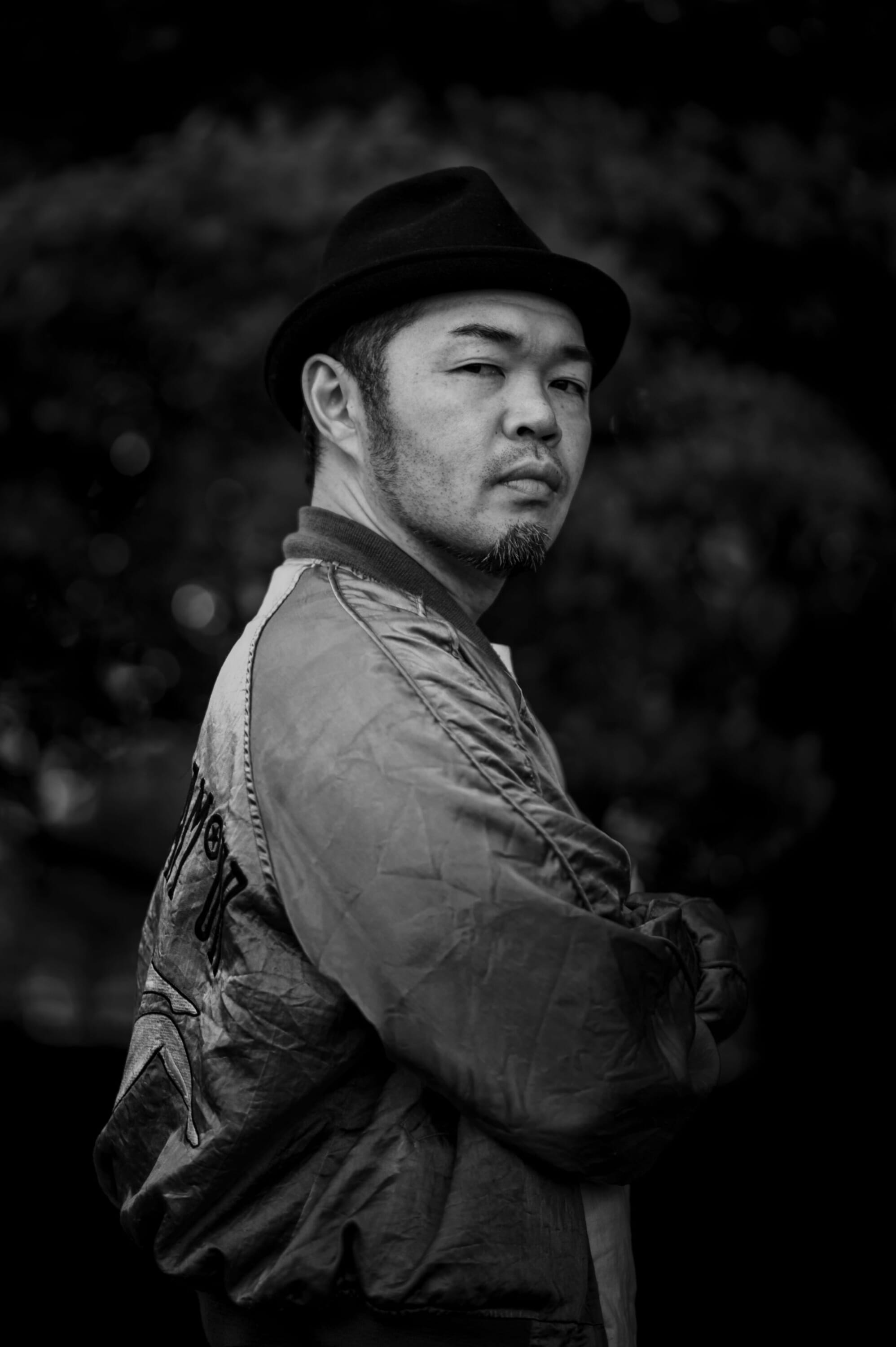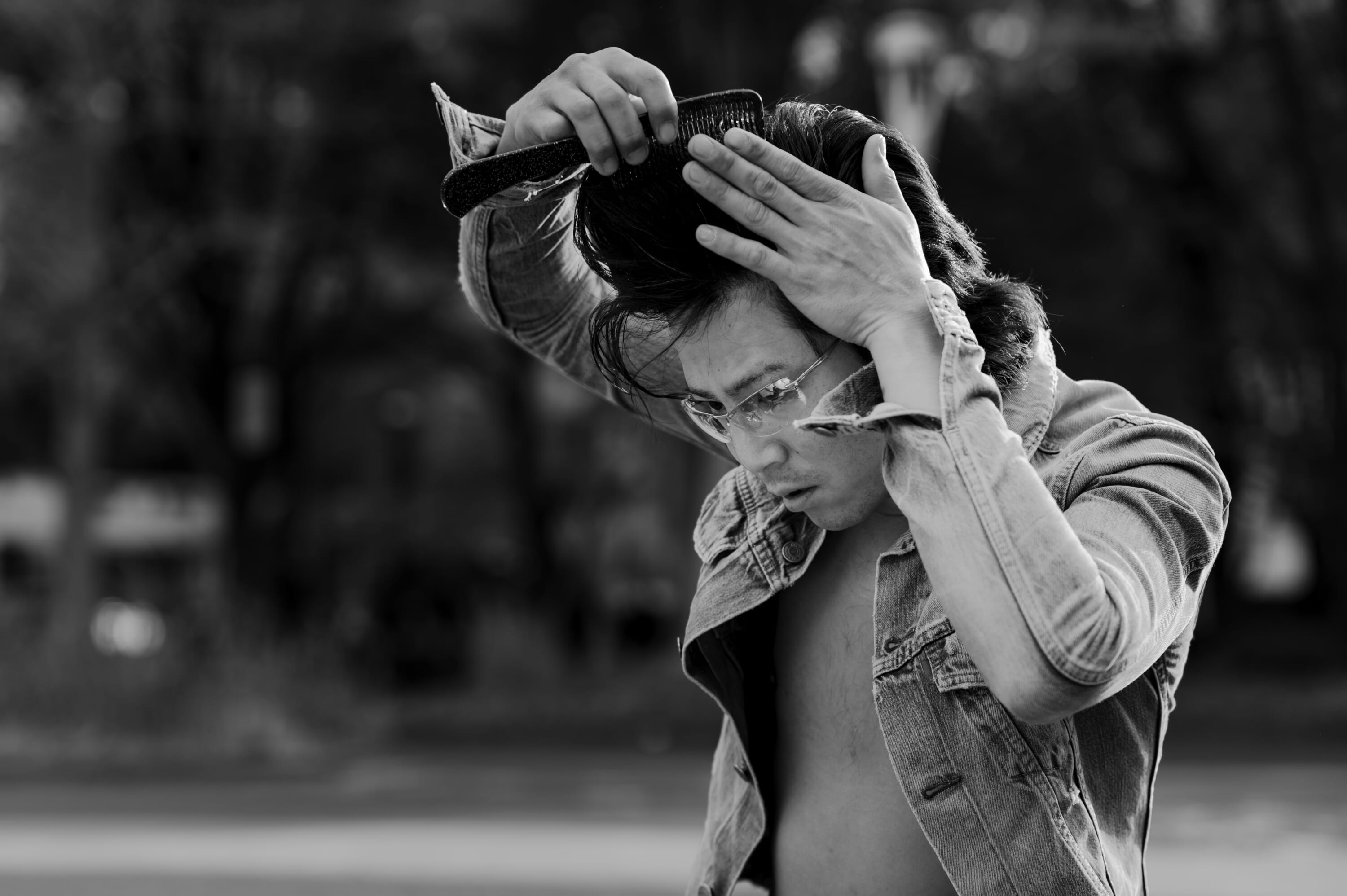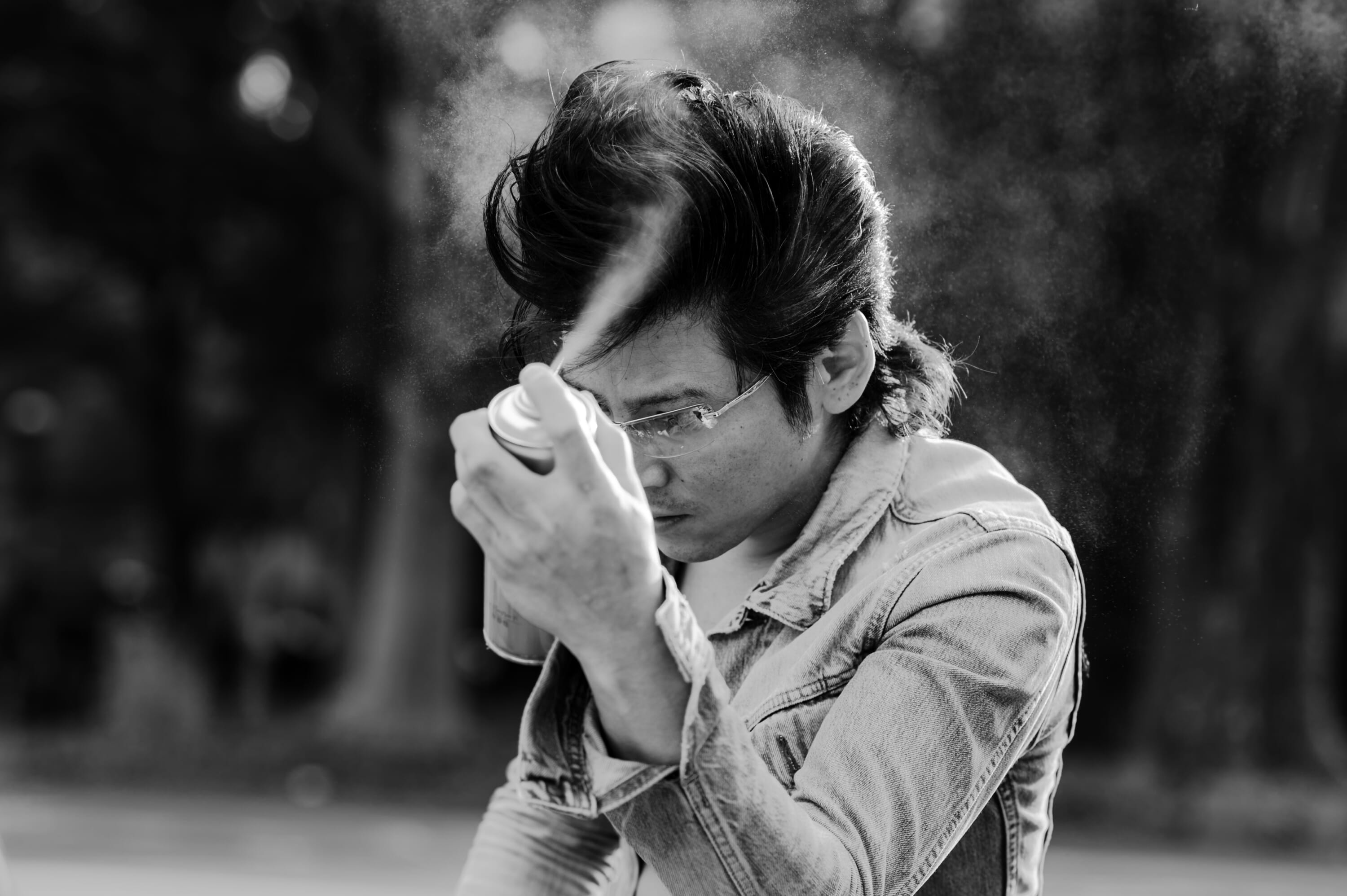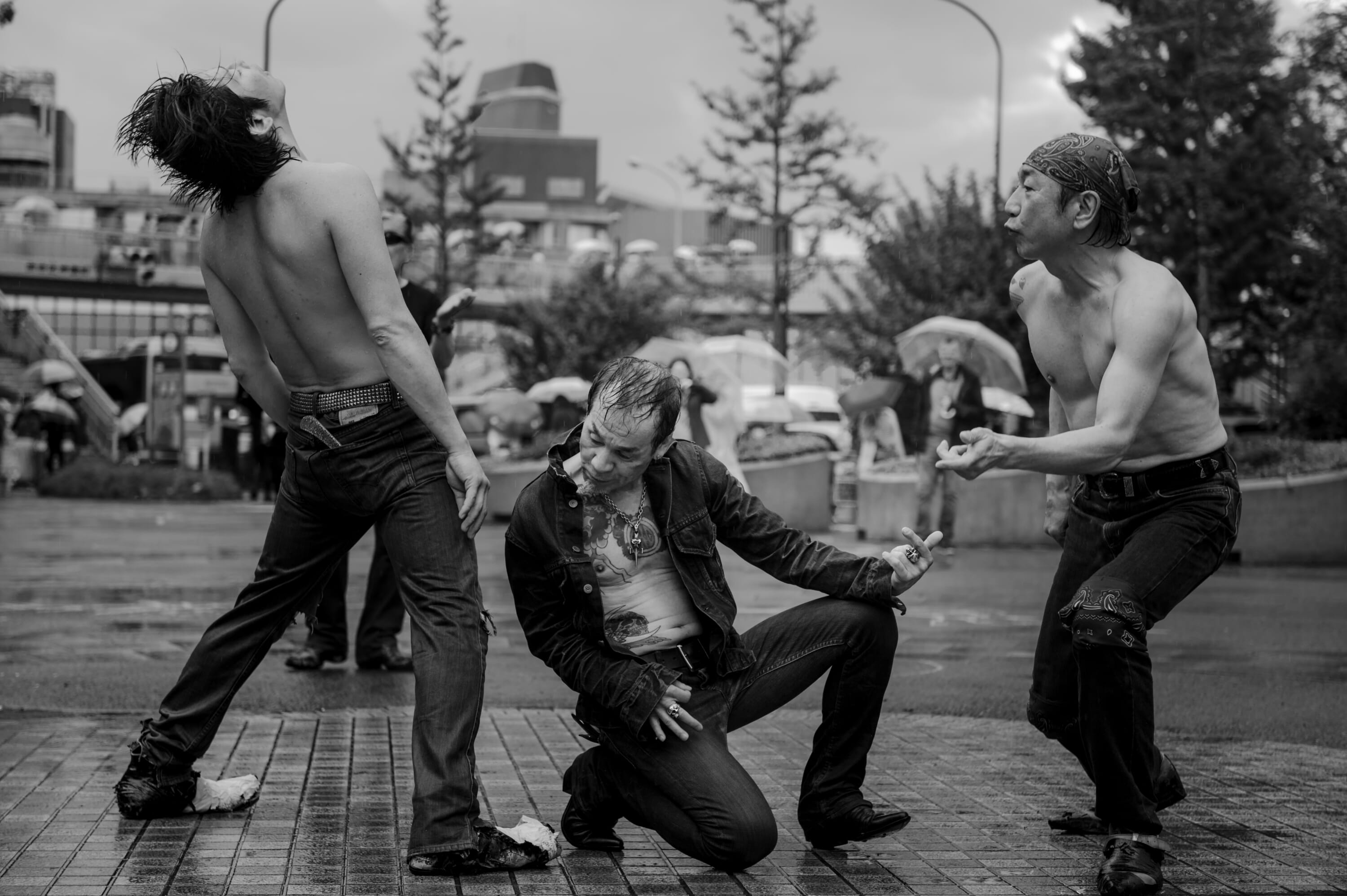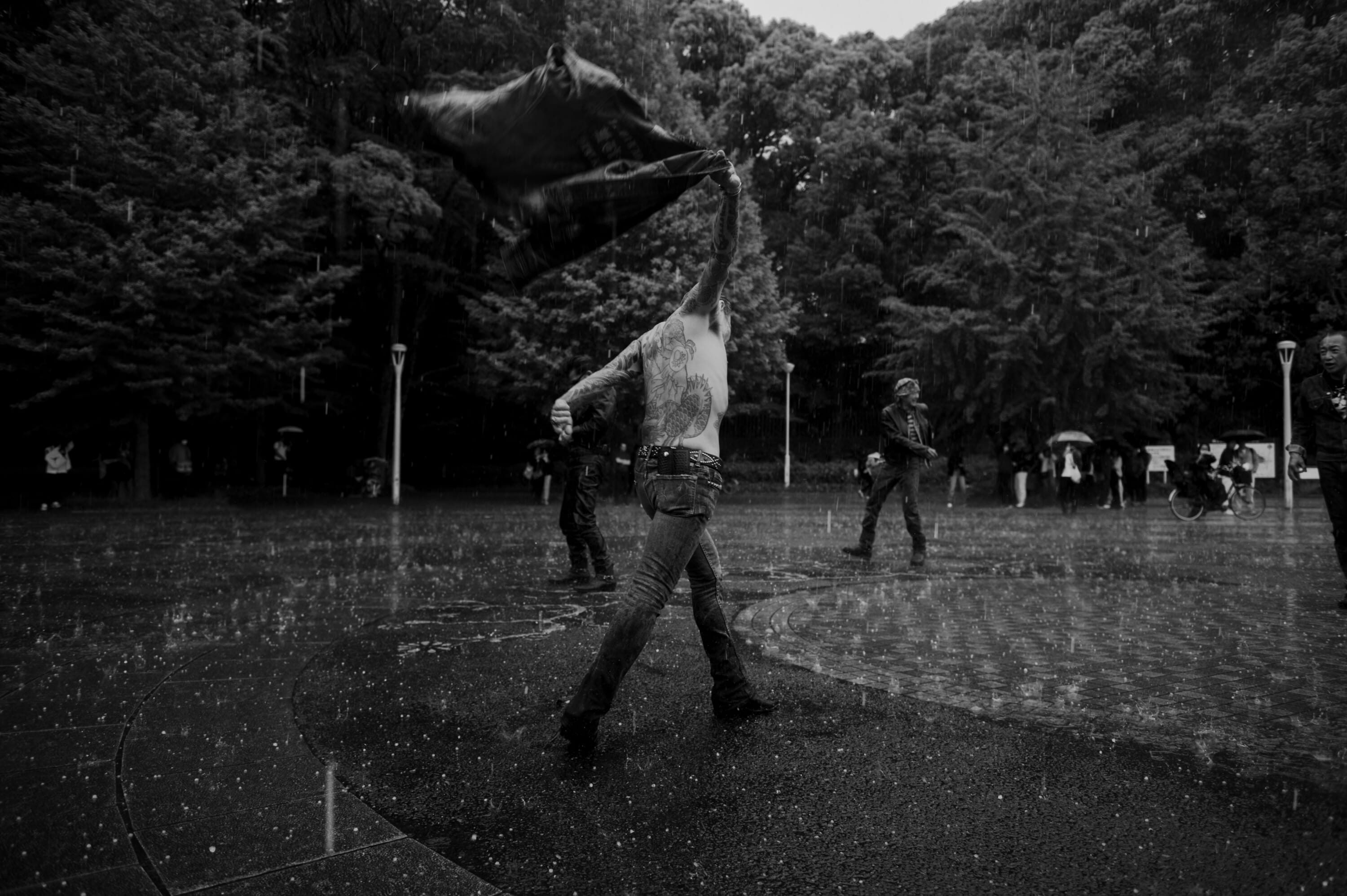Right under the clock tower in Yoyogi Park, time seems to have stopped, frozen in ’50s Americana. Passers-by can’t help but stop, too, mesmerized by the dance moves of the rockabillies, as if they were rock ’n’ roll sirens in the sea of people. But they’ll say they neither stopped time nor went back in time — more like they’ve taken the hands out of the clock completely. You don’t need to know what time it is, because rock ’n’ roll is timeless.
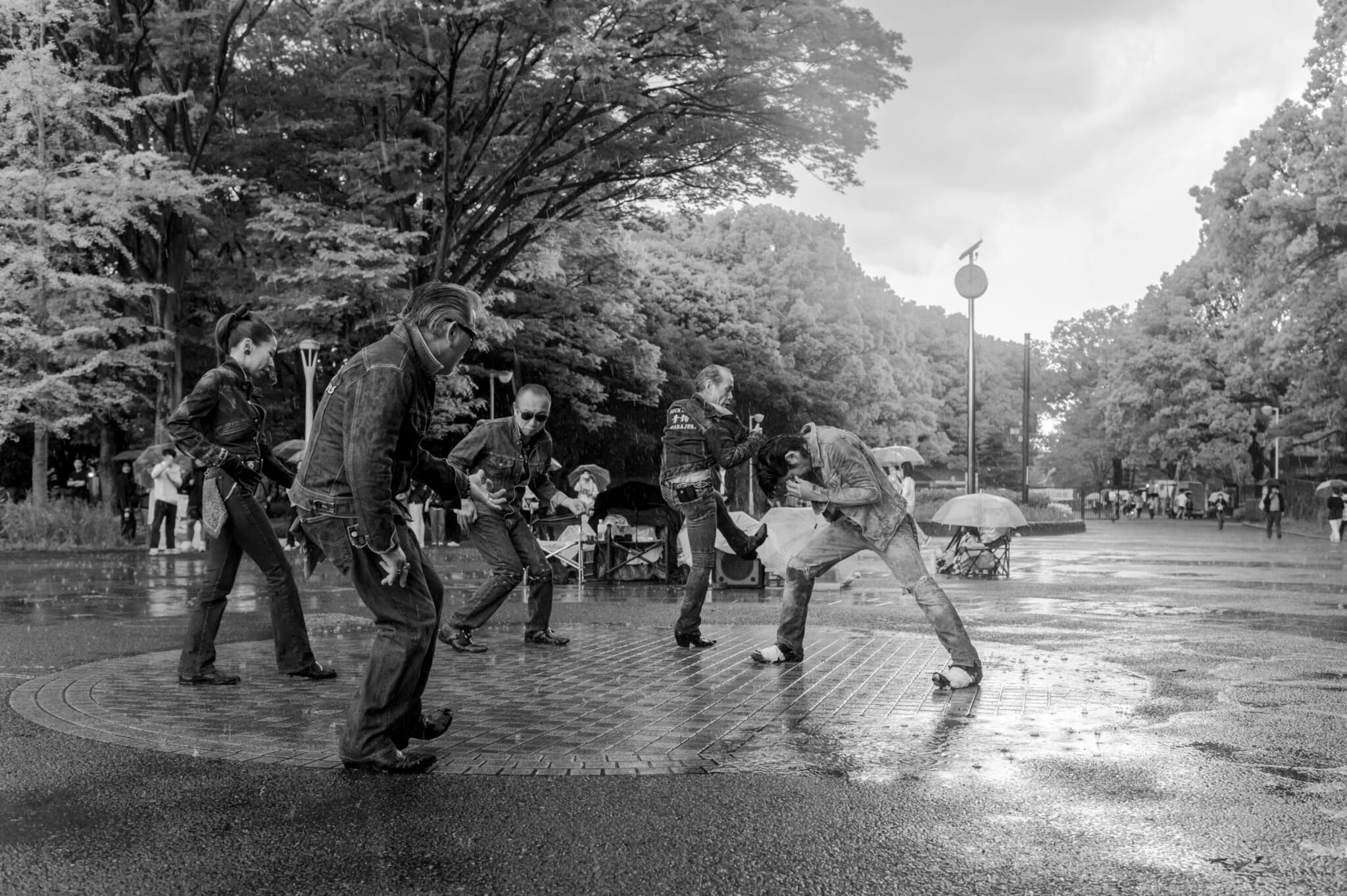
The rockabillies will also tell you that in Japanese, the preferred terms are rock ’n’ roller, roller-zoku (meaning tribe or family) or, simply, roller. Harajuku has long been an epicenter for non-conformity, a safe haven for those who stand out, a power spot where you can find your people. But before there were kawaii Harajuku girls or strawberry cream crepes, there were Tokyo rockabillies with greased hairdos and taped-up shoes. They’re the OGs of Harajuku’s subcultures and are consistently there every Sunday, rain or shine. They even brave hailstorms, dancing while the music player howls under umbrellas.
The Strangers are one of the biggest and oldest groups of rockabillies in Tokyo. Over the course of a month, TW met several times with founder Jess Yamanaka, group leader Charlie, sub-leader Miki, music mixer Haruo and assistant music mixer Tatsu. The group also spoke of longtime members Yosuke, the right-hand man who joined the Strangers when he was 17 and whom we had the pleasure of meeting briefly after interviews were finished, and Gatsu, a well-known DJ in the rockabilly scene. Taking us to their favorite Harajuku haunts, from vintage clothing shops to watering holes, the Strangers let us into their world.
Rewind: How It All Started
Sitting in the group’s favorite kissaten, one of the oldest in Harajuku, Yamanaka tells us that there used to be an American military base in Yoyogi Park. He still remembers hearing the first sounds of rock ’n’ roll coming from apartments where Americans lived. The music piqued his interest and developed into a passion that burns to this day. It also led to his founding and maintaining of the Strangers. The name came straight out of an English dictionary.
“I was looking for something cool, and I saw ‘stranger.’ The definition of ‘outsider, alien’ hit close to home,” he tells us.
The Strangers have existed for 33 years, although some members have danced as rockabillies even longer. Haruo, the most experienced senpai after Yamanaka, has been into rock ’n’ roll since his high school days when he saw dance groups on TV. “I knew I had to go to Tokyo and be a part of it,” he says.
“He has more stamina than all of us,” Miki adds, pointing to the younger members. “He also knows the best dance moves.”
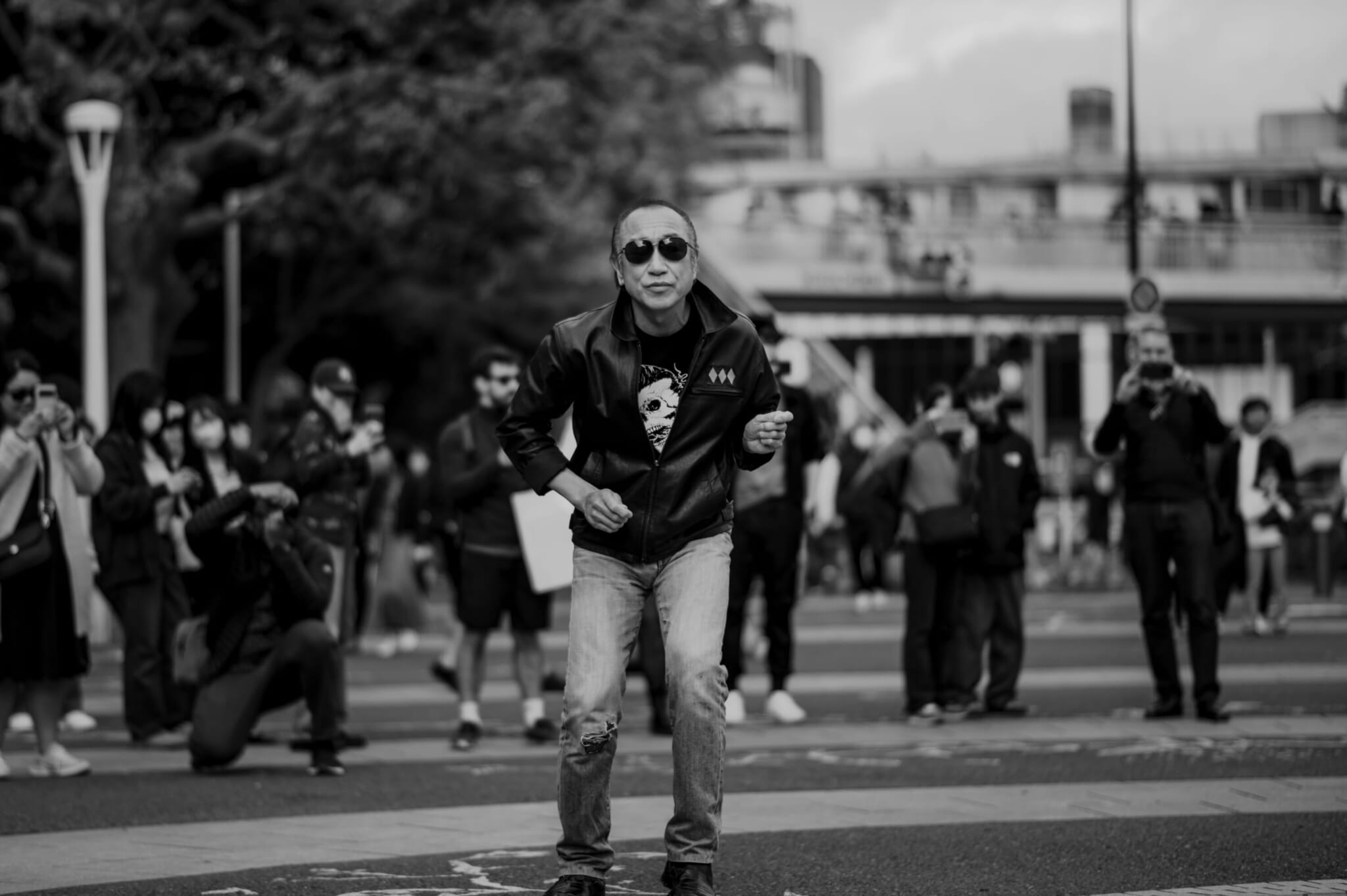
Haruo
Rockabilly subculture hit Tokyo’s streets in the ’80s, the time of Harajuku Hokoten — “hokoten” is short for “hokousha tengoku” and means “pedestrian paradise.” Young and fashionable people came to stroll and dance on a 2.2-kilometer-long stretch of vehicle-free roadway in the Harajuku Station area, and one of the most prominent groups was the vintage fashion-loving ’50s rock music aficionados we know as the rockabillies.
“There were, like, 2,000 to 3,000 people in total, 100 or 200 teams. And the Strangers was one of them,” Charlie tells us.
In 1998, Harajuku’s pedestrian paradise closed, and the Strangers had nowhere to dance. “That’s when we brought the rock ’n’ roll to Yoyogi Park,” Miki explains.
The park had always been part of the pedestrian paradise, so it was natural to retreat there. Park authorities were also reportedly pleased that it was all about song and dance, thereby keeping away more dangerous gangs from setting up in the park. The Strangers have special permission to perform, play music and use electricity in the park.
“We help out with cleaning up trash and whatnot. Anything we can,” Charlie says.
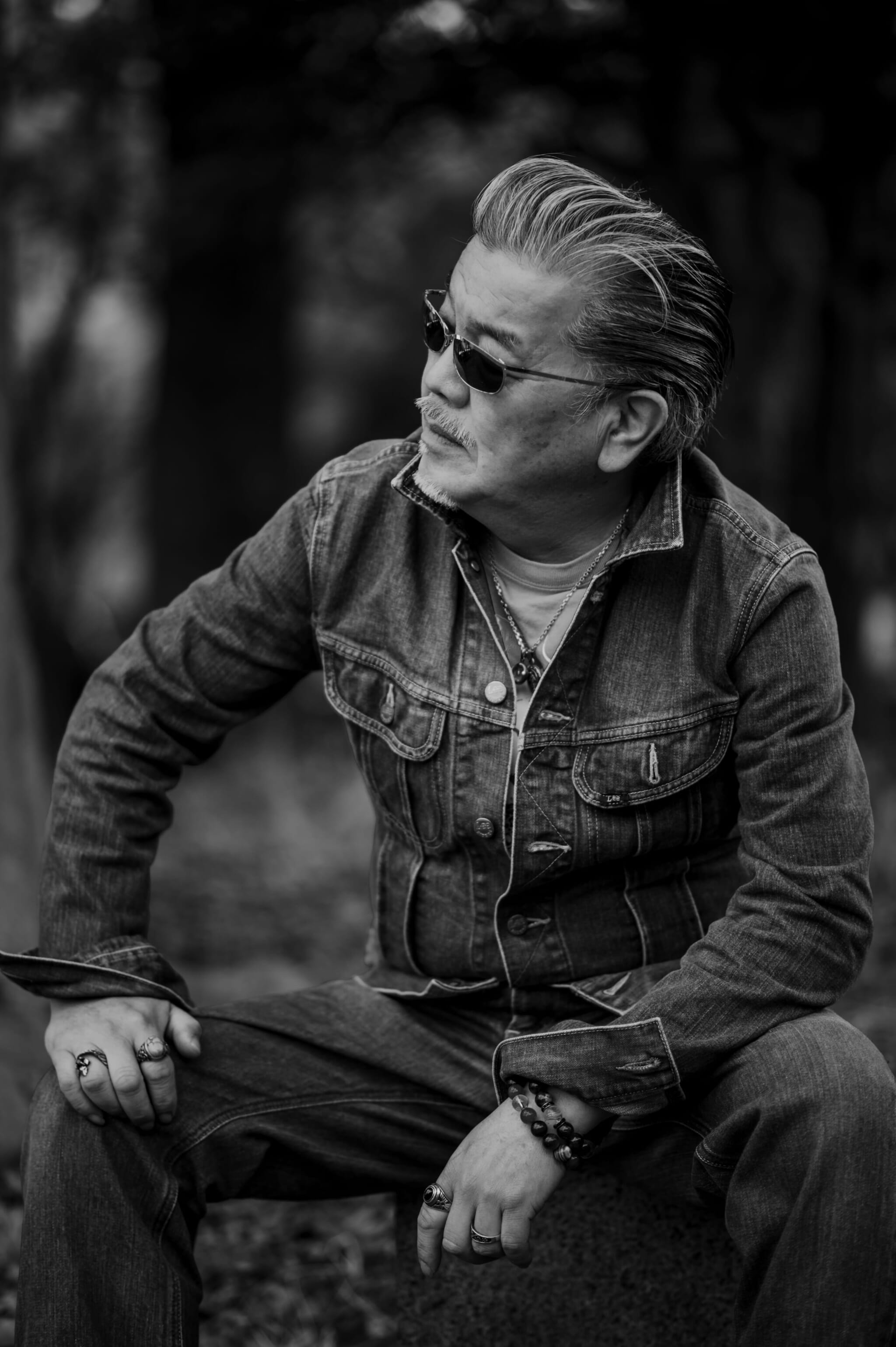
Charlie
Charlie has always admired the Harajuku rockabilly culture, but it took him a while to join the Strangers. Once he did, rockabilly became his whole lifestyle, not just something he did only on Sundays.
“Being a rock ’n’ roller comes from the heart and the soul,” the silver-haired leader adds.
Miki and Tatsu both share that they were fascinated when they first came to know the Strangers, by their dedication, their coolness, their camaraderie. “I thought that they were so inspiring and wanted to be one of them,” Miki says. She’s one of the most prominent female members at the moment.
“And it’s great to hang out with cool people every Sunday,” Tatsu adds. Tatsu, one of the youngest members of the Strangers, could almost be a movie character the way he brims with charisma and busts out impressive moves like the splits.
Play: Grease Up, Dress Up and Dance
The Strangers gather every Sunday afternoon at around 1pm at the clock tower in Yoyogi Park. Aside from the signature ducktail hairdos and pointy shoes of this subculture, the Strangers are recognizable by their denim outfits and the embroidered Strangers logo jackets. Tatsu works on most of the embroidery. The current logo on their T-shirts was designed by Elena, the group’s Russian member who has since had to return to her home country.
They shop vintage fashion, their favorite store being Harajuku Jack’s run by Elovis Sato, a longtime friend of the group who sometimes also dances with them. The Strangers members style their own hair and do their own makeup too. Thankfully, the grease has improved over the years.
“The hair grease we used to use in the old days actually really stank,” Charlie tells us. “When we got on the train on the JR Yamanote Line to Shibuya, people would make way, like the parting of the Red Sea.” Rockabilly grease and perfume seems to have been the official smell of Sunday in Shibuya.
The jacket is the most coveted membership item, but one needs to show consistent dedication to get one. It varies, but it usually takes at least six months.
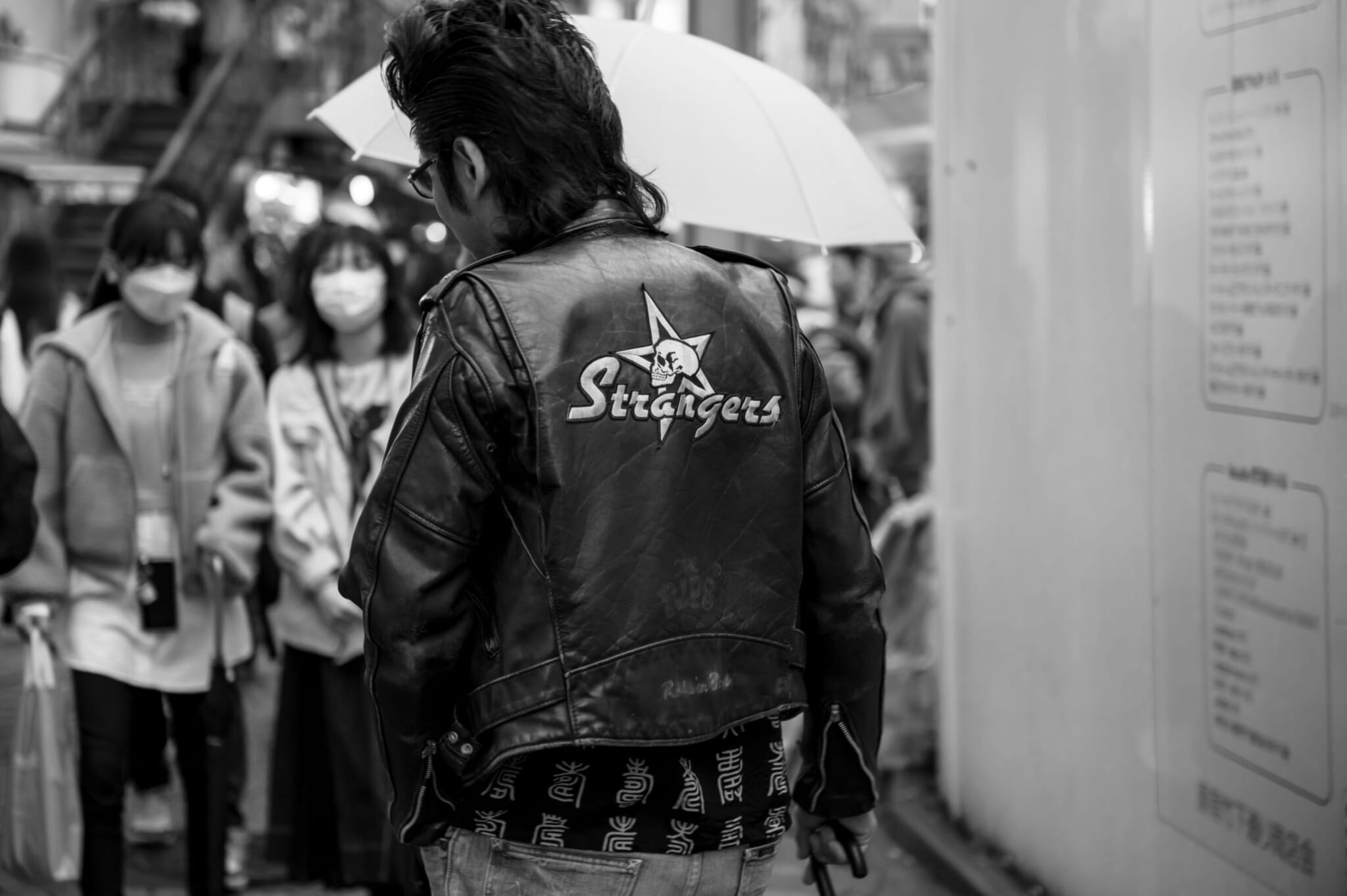
“There’s no test to join! Just come and let us know that you want to become a Stranger. Just come every Sunday and dance with us,” Charlie says.
Impromptu diving into the dance is discouraged, though, mostly for safety reasons. The Strangers dance with each other weekly, so they can gauge each other’s moves and kicks. Non-members are better off shimmying on the sidelines where there’s enough space for everyone.
While seasoned rockabillies like Yamanaka, Charlie and Haruo have the dance in their bones, younger members say they practice moves during the week.
“I watch the videos of our Sunday performances and analyze them,” Miki tells us.
“I usually practice in a Shinto shrine at midnight or at a cemetery,” Tatsu says with confidence. “There is no one there, and I can practice in peace with the ghosts,” he explains following a wave of laughter.
The Strangers recommend listening to Japanese rock ’n’ roll like Johnny Okura and The Mackshow. Their songs feature on what is referred to as “Haruo’s legendary mixtape.”
“We should play that mixtape at Haruo’s funeral,” Tatsu says, cracking one of his dark jokes.
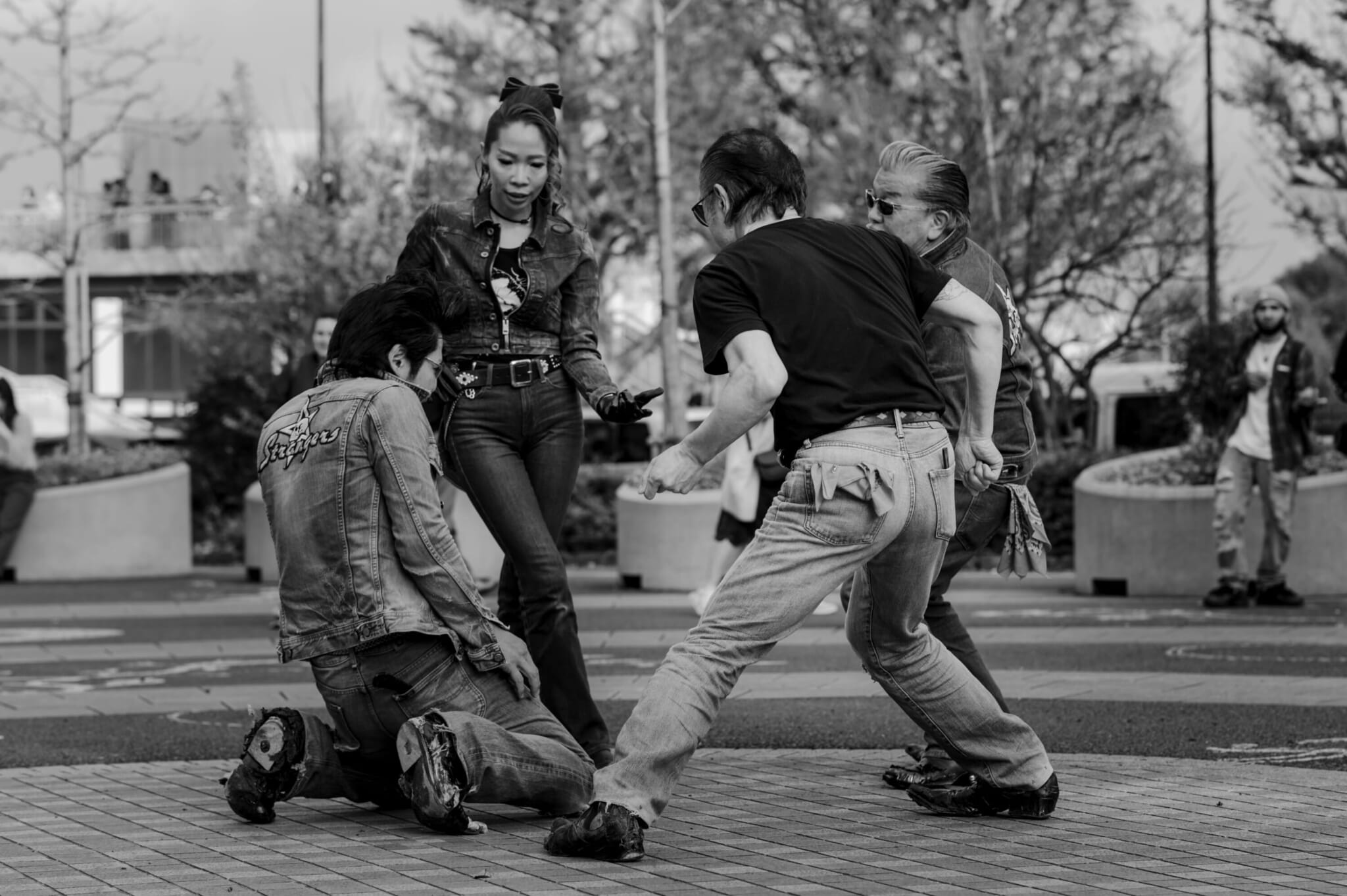
Miki (center) with Tatsu, Haruo and Charlie (from left to right)
Fast Forward: Rocking and Rolling On
The Strangers have also represented Harajuku culture worldwide in their 33 years. Yamanaka tells us the story of meeting Paul McCartney, who came in secret to watch the Yoyogi rockabillies dance while on tour in Japan in 1993. McCartney was so impressed with the Strangers that he asked them to perform with him at Tokyo Dome.
The group shares that they also performed at a Paris Fashion Week after-party in 2016 and starred in the music video for 5 Seconds of Summer’s single “Youngblood” a few years later. In 2018, Yamanaka was invited to train a youth rockabilly group in Dalian, China.
“We want to protect old things, but also try new things, evolve and be in flow with the present,” Miki says. To stay up to date, in 2022, the Strangers created an Instagram account and a Youtube channel.
“We’re so open to international exchange, but none of us is entirely fluent in English,” Haruo remarks. “Aside from Tatsu, who somehow can communicate with foreigners without language.”
“Communication is all about feeling!” Tatsu brags, telling us he has 100 friends who are foreigners.
“Although we may look intimidating from afar, please feel free to approach us after our performances,” Charlie says. They are always happy to take a photo, drink a can of beer and communicate Tatsu’s way — with just vibes.
As if on cue, the table of foreign tourists next to us gathers the courage to approach the Strangers. On their last day in Tokyo, they had come to see the Strangers dance, missed them and ended up in the same hidden kissaten by pure coincidence. The chance meeting culminates in hugs, group selfies and cheering as though they were longtime friends.
“Tell everyone: The keyword is ‘yoroshiku,’” the Strangers say.
And don’t be just a stranger — say hi.

